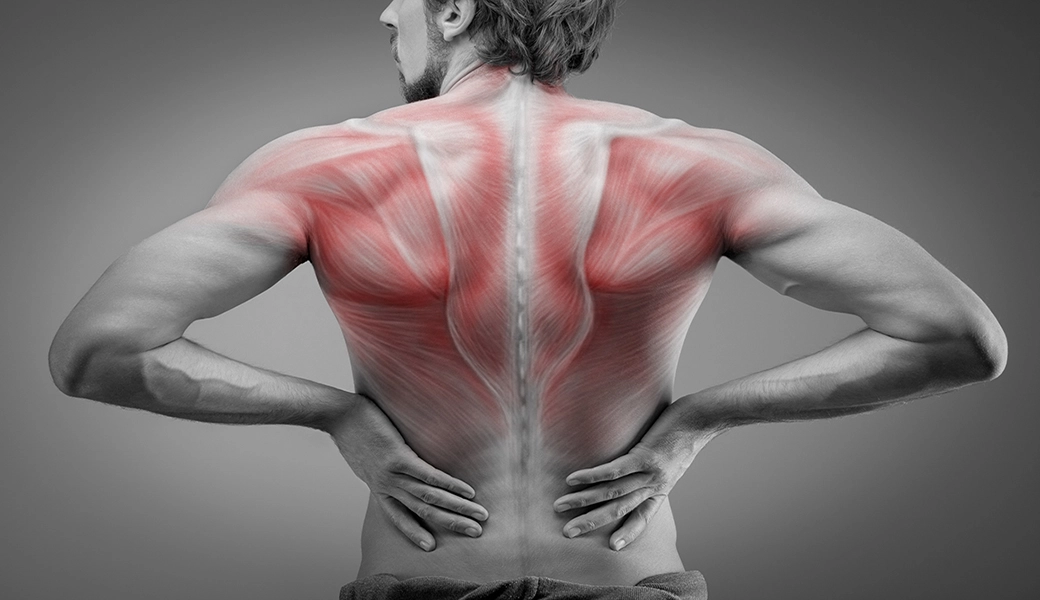Back pain could indicate a pulled back muscle, or something worse. Know the signs of a pulled muscle so you can seek the proper treatment from an Anchorage-based chiropractor.
There are a number of different signs of a pulled back muscle. Common ones include: pain, tenderness, spasms, soreness, swelling, cramping, pain from moving, and relief in Inactivity.
The Symptoms of a Pulled Back Muscle
For most laymen, determining if you have a pulled muscle in your back instead of something else is not an easy task to undertake. Unless you’ve experienced the pain before or you have specific training as a medical professional, like your local Anchorage chiropractor determining the cause of your pain may be difficult.
Pain in the back can have a variety of different causes. For example, let’s just consider three of the most common sources of such pain:
- A strained or pulled muscle: this involves some kind of damage to a region of muscle tissue in your back, usually the result of being over-worked or even torn from an injury
- A sprained back: this involves damage to the ligaments in a joint in your back, typically those located in the vertebrae of the spine.,
- A herniated disc: this involves damage to one of the discs in your spine such that the gel-like center begins to extrude from its usual place.
Although all three of these conditions are medically distinct, sometimes they can have similar symptoms. As a result, if you suffer pain in your back, it is usually best to get a diagnosis from a back pain chiropractor or other medical expert to make sure you know the cause.
The most common symptoms for a pulled back muscle include the following:
1. Pain in the Back
One of the first symptoms of a pulled back muscle is back pain. It can be characterized as dull and sore in most situations, or, occasionally in some situations, sharp, and shooting.
2. Tender to the Touch
Another indication of a pulled back muscle is a feeling of tenderness when pressure is applied to the muscle in question. If you flinch when someone pats you on the back or you suffer some other sudden response from a minor touch, it may indicate an issue with your back muscles like a pull.
3. Spasms
A sudden convulsive spasm in the muscle is another indication that it has been pulled. This can feel like a sudden tightening which, often, may not seem ready to release. It may continue to spasm and lead to further pain as a result.
4. Soreness or Tightness in the Muscle
The degree of pain in the back muscle can often be a measure of the amount of damage sustained. Sore muscles that simply feel tight and perhaps achy usually indicate a condition that is likely to fade in a couple days. More severe, sharp and stabbing pains may indicate a more significant injury.
5. Swelling and Inflammation
If the back muscle has been strained the surrounding area may become inflamed and swell up. This may cause additional pain as everything gets squashed together.
6. Cramping of the Muscle
A pulled back muscle may cramp up in some situations. This will lead to increased pain and tightness whenever you attempt to use the muscle.
7. Pain Resulting from Movement
This is another indication of a pulled back muscle. If pain flares up when you try to move or use the muscles in your back in a specific way, that is usually an indication that something is wrong – possibly a pulled muscle, or something else.
8. You Find Pain Relief in Inactive Positions
If you lean on a shopping cart, lay down to rest, or take some other temporary break and it lessens your pain, you may need to see a medical professional to figure out exactly what is going on. A pulled back muscle is a significant possibility.

Treatments for a Pulled Back Muscle According to an Anchorage Chiropractor
Once you’ve been properly diagnosed, you can begin to effectively treat your pulled back muscle. Not unlike a pulled muscle in the shoulder blade, there are a number of conservative treatments you can begin to apply. These include:
- Limited Rest
- Cold and Heat Therapy
- Massage Therapy (as noted above)
- OTC Pain Meds
- Adding Anti-inflammatory Foods to Your Diet
- Physical Therapy
- Chiropractic Care
I should stress, once again, that these therapies should really be used only under the supervision of a medical professional like a chiropractor based in Anchorage. They will be able to sort through all the possible causes and the needed treatments far more readily than you if you try to treat on your own.
A chiropractor, for example, knows how to tell if back pain is from a muscle or disc injury. Your own research might give you some clues, but, in the end, the chiropractor has far more experience and is far better equipped to make such decisive judgments.
Regardless of whether or not you are suffering from lower back pain after a deadlift or some other activity, it’s best to get medical supervision.
The Science of Massage
As in many other types of musculoskeletal issues, the first recommendation for treating a pulled back muscle is the use of a wide variety of conservative techniques. One such technique is massage. This can take the form of massage therapy or chiropractic massage. Both can be useful.
A study in Science Direct found that massage interventions on patients with Lower Back Pain symptoms helped provide short-term relief and a decrease in disability immediately after treatment, particularly when combined with therapeutic exercise.
A study in IOS press did a comparison between the effectiveness of therapeutic massage and deep tissue massage on patients with chronic low back pain. Both types of massage were found to be effective, but deep tissue massage was more effective than therapeutic in treating low back pain.
A systematic review of studies in the National Library of Medicine found that there is a small, but growing body of evidence that supports the effectiveness of massage therapy as a means of treating non-specific low back pain over the short term.
A case study in the National Library of Medicine found that “massage therapy is a promising treatment for chronic low-back pain for patients who may have multiple pathologies, any one of which could be responsible for the condition.”
Schedule a Massage Therapy with Better Health Alaska
If you are seeking out a massage therapy in Anchorage, our team of providers can tend to your needs. Let’s look at some of the evidence supporting the use of massage for forms of back pain, like pulled muscles.
If you suffer from lower back pain it may just be a pulled back muscle. If it is, it may get better over time, but you really shouldn’t wait to get it evaluated and, perhaps, even treated by a chiropractor, massage therapist, or other medical professional in Anchorage, AK.
Sources:









